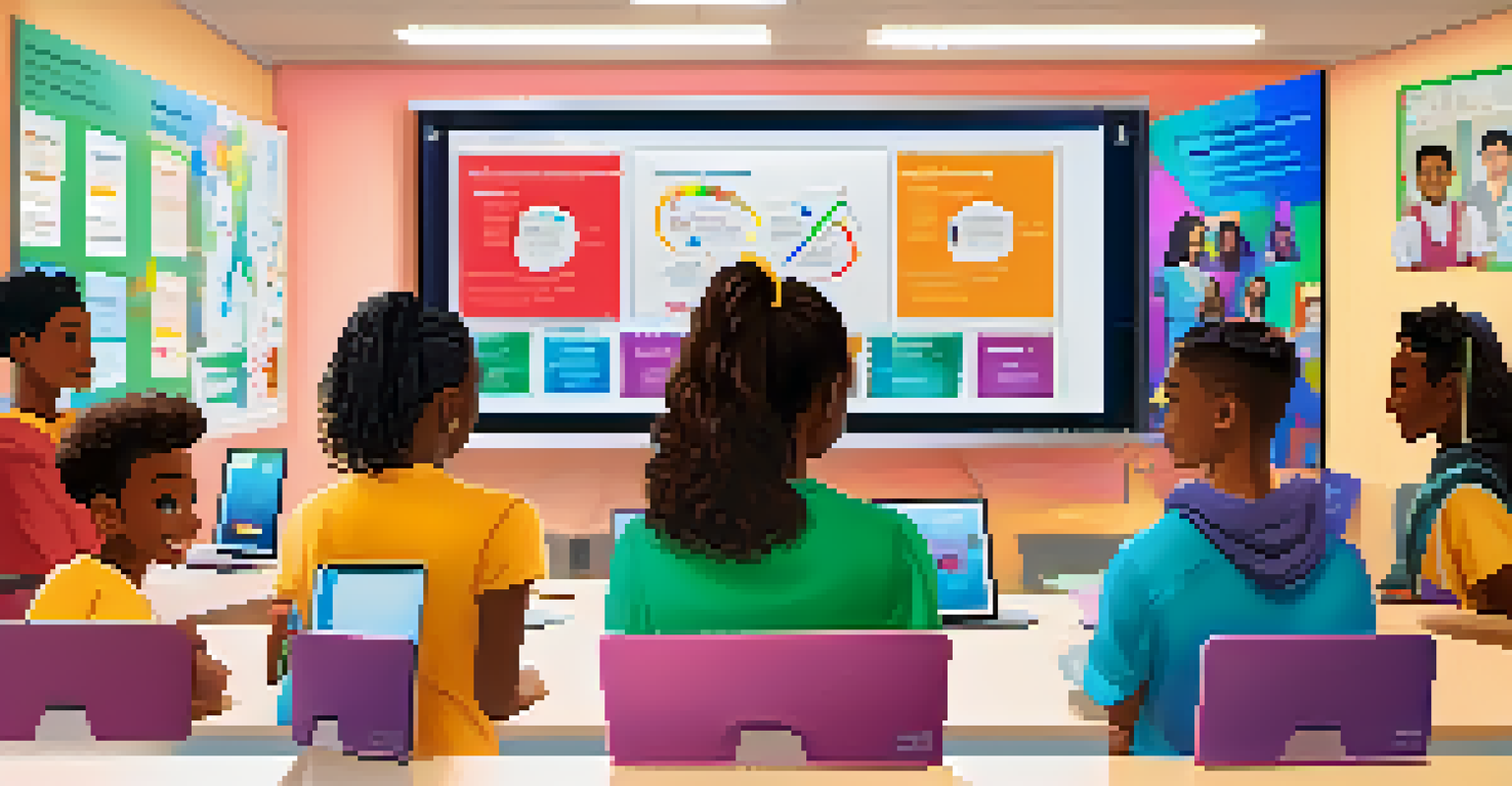Preparing Students for a Digital Future in Remote Learning

Understanding the Shift to Remote Learning
The shift to remote learning has been significant, especially in recent years. With advancements in technology, classrooms have expanded beyond physical walls, allowing students to learn from anywhere. This transition is not just a temporary change but a fundamental shift in how education is delivered.
Education is the most powerful weapon which you can use to change the world.
Remote learning offers flexibility and accessibility that traditional classrooms may lack. Students can access resources at their convenience, fostering a sense of independence. However, this shift also requires students to adapt to new ways of learning, which can be both exciting and daunting.
As we embrace this digital future, understanding the nuances of remote learning becomes crucial. It’s not just about transferring lessons online; it’s about creating an engaging environment that nurtures learning and development.
Essential Digital Skills for Students
In a digital learning landscape, certain skills have become essential for students. These include proficiency with various online tools and platforms that facilitate learning. From using collaborative software like Google Workspace to navigating educational apps, these skills are foundational.

Moreover, digital literacy goes beyond just knowing how to use technology. It involves understanding how to find, evaluate, and use information effectively. For instance, students should be taught how to discern credible sources from unreliable ones, a skill that will serve them well beyond the classroom.
Embracing Remote Learning's Flexibility
Remote learning offers students the flexibility to engage with educational resources anytime, fostering independence in their learning journey.
Equipping students with these skills empowers them to take charge of their learning. It also prepares them for a future where digital competence is increasingly important in both academic and professional settings.
Creating an Engaging Online Learning Environment
An engaging online learning environment is vital for student success. This involves not just the content being taught but also how it is delivered. Teachers and educators can utilize interactive tools like quizzes, discussion boards, and multimedia presentations to make lessons more engaging.
The future belongs to those who prepare for it today.
Additionally, fostering a sense of community is crucial in remote learning. Students should feel connected to their peers and instructors, which can be achieved through regular check-ins, group projects, and virtual study sessions. These interactions help combat feelings of isolation that can come with remote learning.
Ultimately, an engaging online environment promotes motivation and participation, leading to better learning outcomes. When students are excited about their learning, they are more likely to succeed.
Encouraging Self-Motivation and Accountability
Self-motivation is a key ingredient for success in remote learning. Unlike traditional classrooms, where structure is imposed, online learning puts the onus on students to keep themselves on track. Developing self-motivation skills helps students take ownership of their education.
One effective way to encourage this is by setting personal goals. Students can benefit from creating a study schedule or learning objectives that they can work towards. This not only cultivates discipline but also gives them a sense of accomplishment as they meet their goals.
Digital Skills are Essential
Proficiency in digital tools and critical evaluation of information are foundational skills that empower students in a digital learning landscape.
Accountability also plays a significant role in remote learning. Encouraging students to share their goals with peers or family can help keep them accountable. When students know someone else is aware of their commitments, they are more likely to stay on track.
The Role of Parents in Remote Learning
Parents play an essential role in their children's remote learning journey. Their support can make a significant difference in how well students adapt to this new environment. By being involved, parents can provide encouragement and help create a conducive learning atmosphere at home.
Communication between parents and teachers is also crucial. Regular updates from educators can help parents understand what their children are learning and how they can assist. This partnership fosters a stronger educational experience for students.
Moreover, parents can help establish routines that mimic the structure of a traditional school day. This can include setting specific times for learning, breaks, and recreational activities, which helps students stay focused and organized.
Harnessing Technology for Enhanced Learning
Technology is a powerful ally in the realm of remote learning. By harnessing various tools and resources, educators can enhance the learning experience. For example, video conferencing platforms allow for real-time interaction, while learning management systems can organize resources efficiently.
Additionally, there are numerous educational apps available that cater to different learning styles. Whether a student thrives through visual aids or interactive simulations, technology can provide tailored experiences that traditional methods may not offer.
Parental Support is Key
Active involvement from parents can significantly enhance the remote learning experience by providing encouragement and establishing productive routines.
As we continue to navigate this digital landscape, embracing technology will be key. It not only makes learning more accessible but also enriches the educational journey by providing diverse ways for students to engage with content.
Preparing for a Future Beyond Remote Learning
While remote learning is currently a significant focus, it’s important to prepare students for a future that may combine both online and in-person education. This hybrid model can offer the best of both worlds, allowing for flexibility while still providing essential face-to-face interaction.
Students should be encouraged to develop skills that will serve them in any learning environment. Critical thinking, collaboration, and adaptability are just a few examples of competencies that will be valuable in the future job market.

Ultimately, preparing students for a future beyond remote learning means fostering resilience and lifelong learning. By equipping them with the right tools and mindset, we can ensure they thrive, no matter the format of their education.